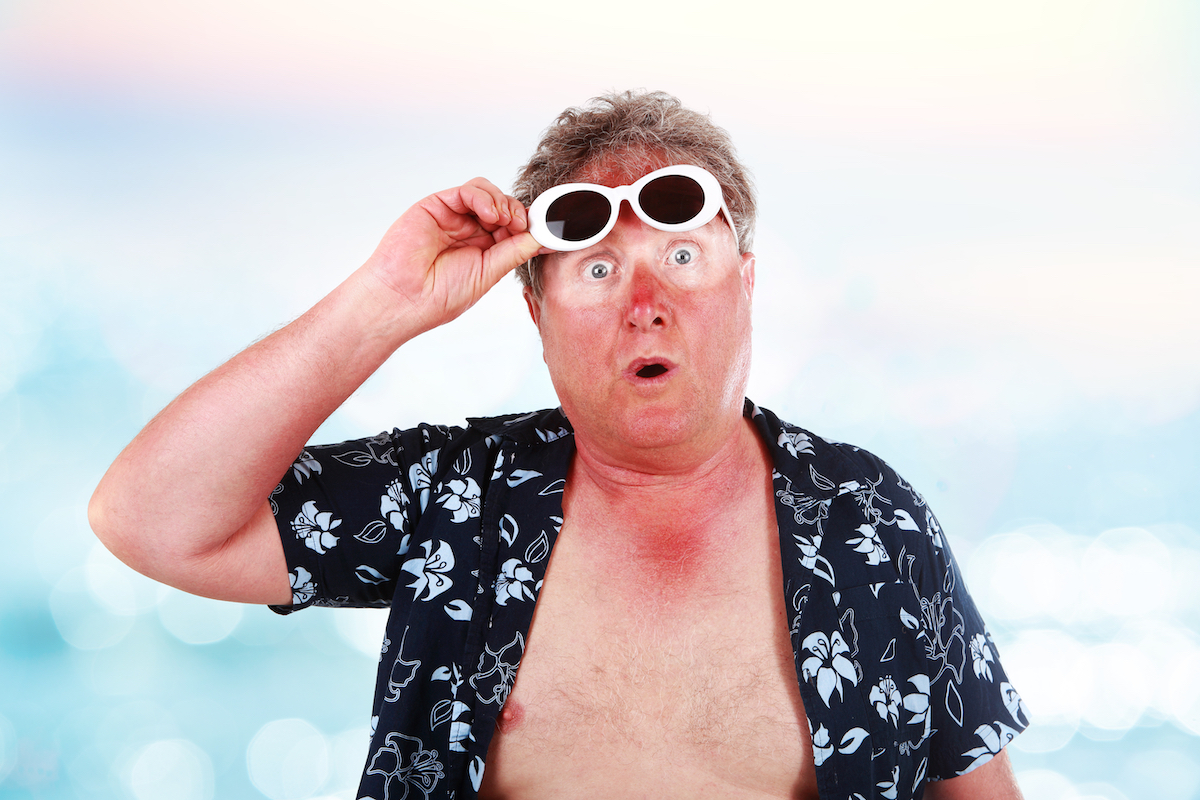
Barbecues, splashing around the pool, laying on the beach – summer days are perfect for soaking up enough rays to last us through winter. But what if you got too much of a good thing?
Tryon Medical Partners dermatologist Dr. Erin Hodges weighs in on what to do when you’re bummed you got burned.
1. Stop burning.
It sounds simple, but immediately after intense sun exposure, stay out of the sun. Continuing to expose burned or irritated skin to the sun will only add insult to injury.
2. Stay cool and wear loose clothing.
Consider taking a brief (5-10 minute) cool shower. Once the skin is clean and cooler, put on loose clothing that won’t brush up against or irritate your skin. Continue to keep the skin cool, but don’t put ice directly on it.
3. Moisturize the right way.
One of the keys is to keep your skin moisturized. Consider applying moisturizer when your skin is still damp and it’s quicker to absorb. Moisturize with something light, fragrance free and gentle. For an all-natural option, aloe is filled with soothing properties. Stay away from something thick like Vaseline, which will seal in the heat.
4. Bring down inflammation.
“Skin provides a lot of important functions (maintaining body temperature, keeping fluids in), so when your skin is burnt, you’re going to be uncomfortable,” says Dr. Hodges.
Taking ibuprofen will help shut down inflammation with the burn. This method is most effective when you take it at the first sign of a burn.
5. Leave your skin alone.
Avoid any topic numbing medicines like lidocaine and benzocaine because these products may be additionally irritating or even trigger an allergic reaction on sunburned skin.
Dr. Hodges shares, “Think of any peeling or blistered skin as a scab and do not pick it. Blisters and peeling are skin’s natural band-aid. Support it from the outside by keeping it cool, wearing loose clothing and moisturizing.”
6. Make this the last sunburn you ever get.
 Sunburns, and even tans, are indicators that we’re damaging our skin, and this has consequences – for every five sunburns, your risk of melanoma doubles, and one blistering sunburn alone can double your risk.
Sunburns, and even tans, are indicators that we’re damaging our skin, and this has consequences – for every five sunburns, your risk of melanoma doubles, and one blistering sunburn alone can double your risk.
“Patients think, well, if I’m using sunscreen, it is fine to get a tan,” Dr. Hodges shares. “But what I try to teach them is that if you have a tan, your skin has been damaged by sun exposure.”
If you know you’re going to be spending significant time outdoors, consider the three S’s:
Sunscreen.
Dr. Hodges recommends wearing a minimum of SPF 50 and the equivalent of two tablespoons to cover your whole body (imagine the amount of a shot glass). Make sure to reapply at least every 90 minutes. Sunscreen is designed for dry skin so if you go for a dip, reapply every time you dry off.
Sun-protective clothing.
Sun-protective clothing provides built-in Ultraviolet Protection Factor (UPF). UPF indicates how much UV radiation (both UVB and UVA) a fabric allows to reach your skin. A UPF of 30 to 49 offers very good protection, while UPF 50+ rates as excellent.
Shade.
Dr. Hodges recommends that as soon as you feel uncomfortable, get out of the sun. Often, skin won’t turn pink immediately so we must rely on our sensations, like skin tingling or itching, to indicate overexposure. When in doubt, move to the shade.
Even if you’re meticulous about protecting your skin from the sun, everybody can benefit from an annual visit to the dermatologist for a skin exam. This is especially true with a family history of skin cancer or you’ve experienced more than five sunburns. When Dr. Hodges diagnoses skin cancer, it’s often a spot that someone hasn’t noticed or didn’t realize was concerning at all.
Reach out to Tryon today to see when you can book an annual skin check-in.

